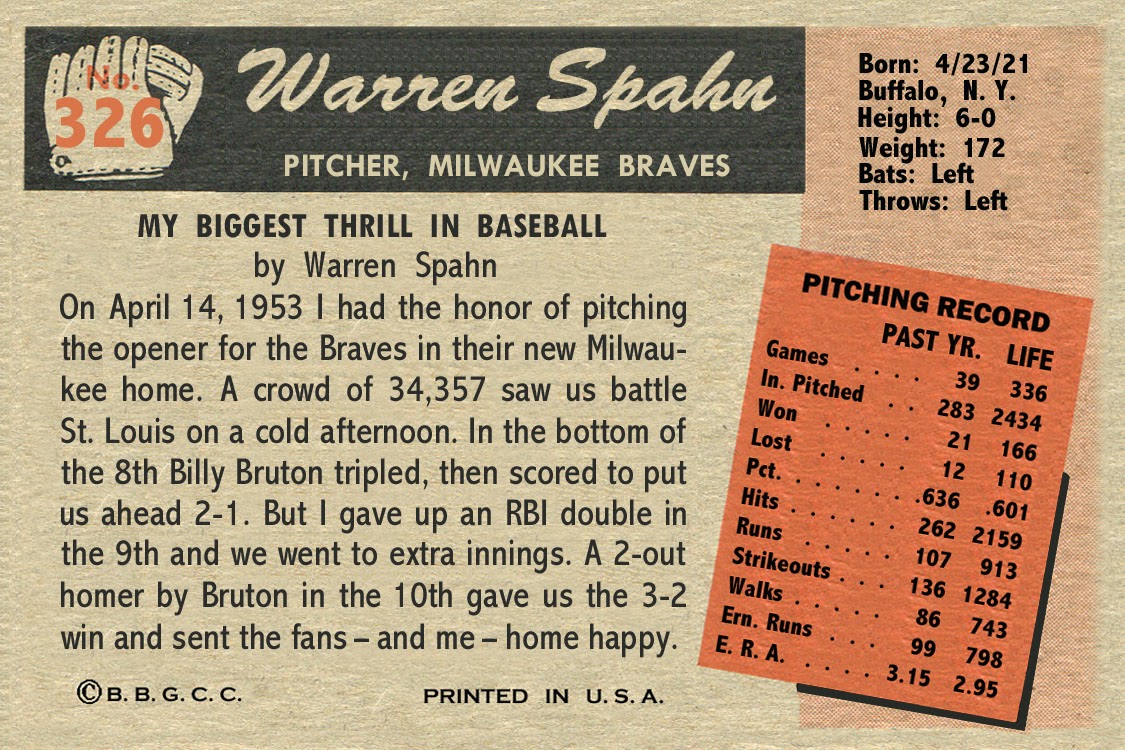We continue our series on 1950s-1970s Baltimore Orioles regional cards that have largely remained uncataloged to this point.
The data and scans for these presentations, which began Feb. 8 (English's Chicken bucket lids) and Feb. 9 (Kiwanis baseball clinic), are brought to you courtesy of specialist collector Alan Strout of Maine.
Among the many vintage Baltimore Orioles regionally issued baseball cards and player collectibles he has chased down over the years, Strout has assembled complete checklists of the "cards" printed each year 1960-1963 during spring training by the Baltimore News-Press.
The formats of these issues differed a bit from year to year, but generally share a number of elements such as a black-and-white portrait photo, biographical details, a capsule career summary (1960-61) or lifetime major and minor league stats (1962-63), a facsimile autograph and a dotted line or margin rules indicating how the pictures were to be cut out of the newspaper.
Values for there newspaper cards is hard to pin down. They are usually of interest only to die-hard team specialists and single-player collectors. They tend to have suffered border damage when kids cut them off the page, and most have yellowed, curled or otherwise deteriorated over the years. While they probably are more typically found for a couple of bucks apiece, some have reportedly sold for more than $100.
If you would like to contact Strout about the Orioles' regionals you'll see in this series or exchange information about other O's issues, you can email him. I'm going to give his email address here in "coded" form so the robo-scanners don't add it to their spam lists. You can reach Alan Strout of Maine at: (his first name)_(his last name)(at symbol)umit.(his state).edu. Strout can also be reached by mail at P.O. Box 84, Kenduskeag, ME 04450.
1960 Baltimore News-Post Scrapbook cards
The premiere year for the Orioles' scrapbook cards was the only year that the pictures were numbered.
The format for the 1960 pictures was a nominal 4" x 7". Besides the picture and facsimile autograph, the card had personal data including name, position, nickname, home, height, weight, birth date, off-season occupation and name of wife and children, when applicable.
A couple of paragraphs provided career data and prospects for the coming season.
The set included not only veteran players, but top minor league prospects, coaches and the manager. A number of players found in this set do not appear on any other baseball cards.
Of special note is the card of 19-year-old Dean Chance. After two years in the Orioles' minor league system, he was picked by the Washington Senators in the 1960 expansion draft and immediately traded to the Los Angeles Angels, for whom he won 20 games and the Cy Young Award in 1964. (It would be fun to make a 1960-style Rookie Star card of Chance as an Oriole, but I have never found a photo of him in a Baltimore uniform.)
1 Marv Breeding
2 Jim Gentile
3 Barry Shetrone
4 Fred Valentine
5 Jerry Adair
6 Ray Barker
7 Leo Burke
8 Ron Hansen
9 Dave Nicholson
10 Brooks Robinson
11 Wes Stock
12 Dean Chance
13 Billy Gardner
14 Hal Brown
15 Arne Thorsland
16 Jack Fisher
17 Boog Powell
18 Bob Mabe
19 Alfred Nagel
20 Bob Saverine
21 Arnold Portocarrero
22 Rip Coleman
23 Bob Boyd
24 Albie Pearson
25 Gene Woodling
26 Billy Hoeft
27 Gus Triandos
28 Joe Ginsberg
29 Willie Tasby
30 Gene Green
31 Johnny Powers
32 Art Quirk
33 Chuck Staniland
34 Bob Riedel
35 Milt Pappas
36 Steve Barber
37 Gordon Jones
38 Walt Dropo
39 Billy Klaus
40 Jackie Brandt
41 Hoyt Wilhelm
42 Jerry Walker
43 Al Pilarcik
44 John Anderson
45 Chuck Estrada
46 Lum Harris
47 Harry Brecheen
48 Jimmy Adair
49 Clint Courtney
50 Paul Richards
Tomorrow we'll checklist the 1961 Baltimore News-Post scrapbook cards.
we























